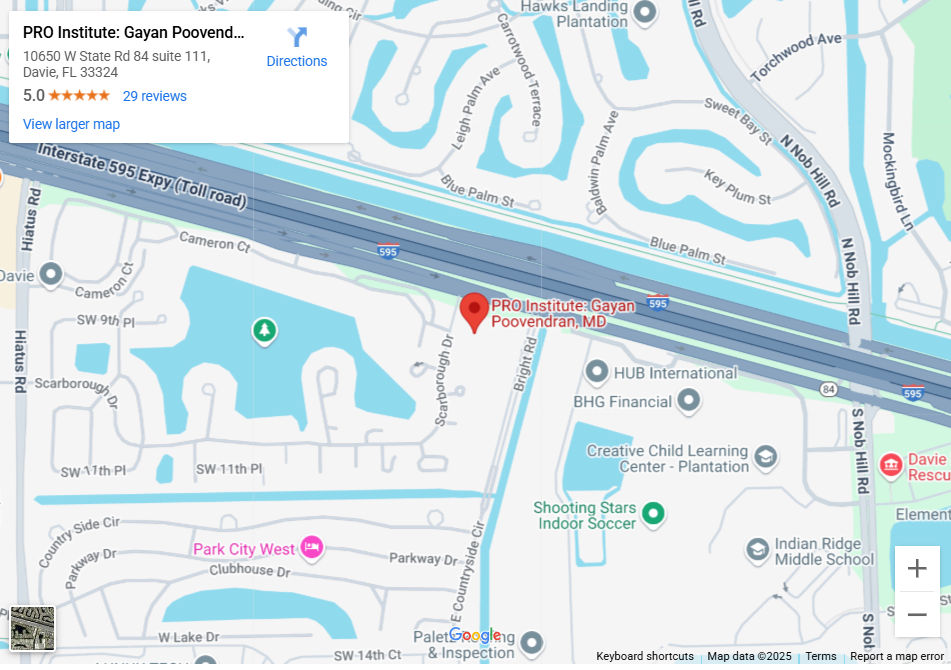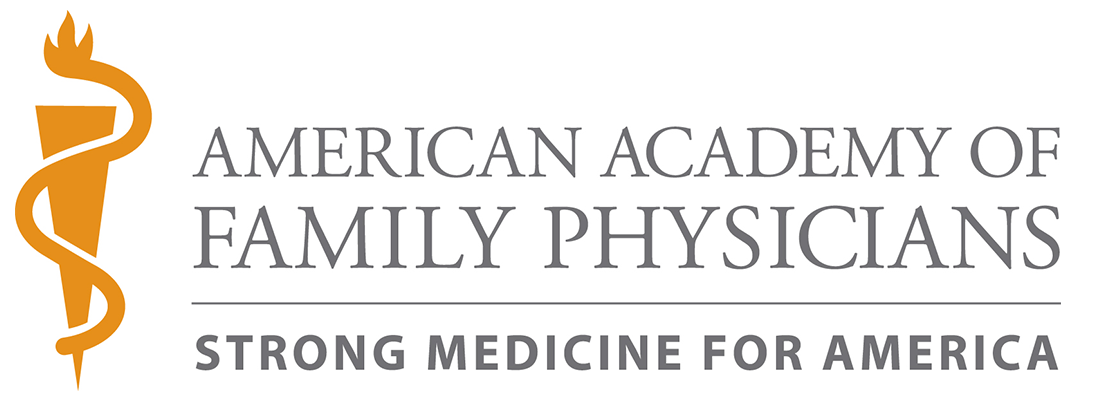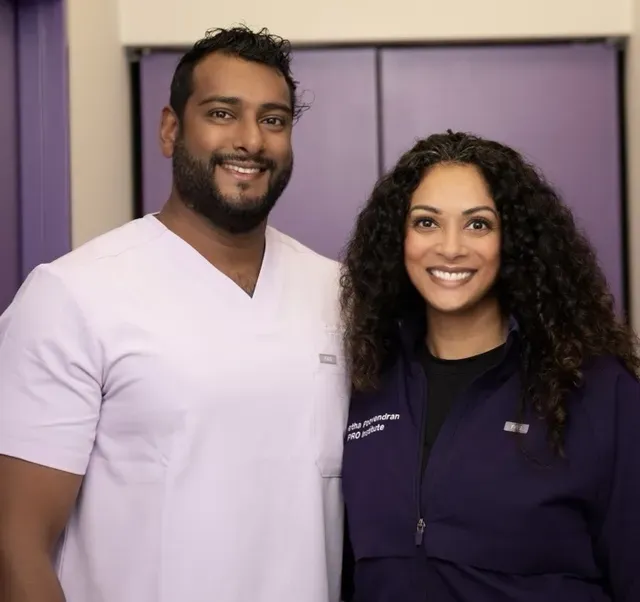
![]()
PRO Institute
Regenerative Sports Medicine Physician & A Private Medical Practice located in Davie, FL
PRO Institute is a family-owned medical practice in South Florida, founded by husband-and-wife team Dr. Gayan Poovendran and Geetha Poovendran. As one of the region’s leading medical practices for regenerative sports medicine, holistic health, and integrative care, PRO Institute is dedicated to delivering personalized, cutting-edge treatments that restore wellness, enhance performance, and address the root causes of chronic conditions. Under the expert leadership of Dr. Gayan Poovendran, MD, our clinic offers cutting-edge, patient-centered solutions for individuals aged 14 and older.
Our Mission
At the PRO Institute, our mission is to provide ethical, honest, and transparent regenerative sports medicine care with the patient’s well-being at the heart of everything we do. As a family-owned practice, we embrace a family-first mindset—treating every patient and team member with the same compassion and respect we would offer our own loved ones…
Read More
We are dedicated to helping our patients avoid unnecessary surgery and return to active, pain-free lives using the most advanced, evidence-based regenerative therapies available. We combine the latest medical technology with truly personalized care to make sure every patient feels heard, understood, respected, and treated as a person—not just a number.
Your recovery is our priority, and we’re here to support you every step of the way.
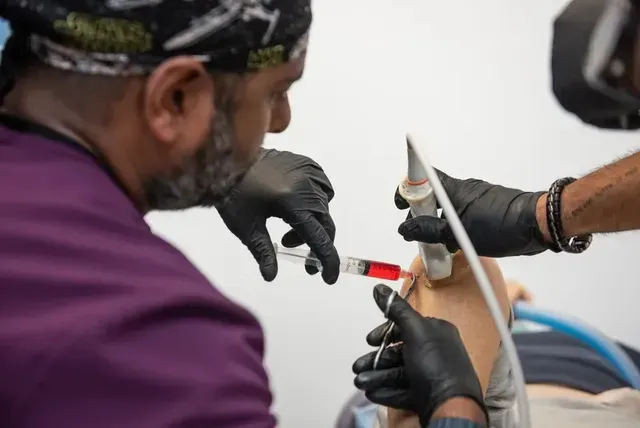
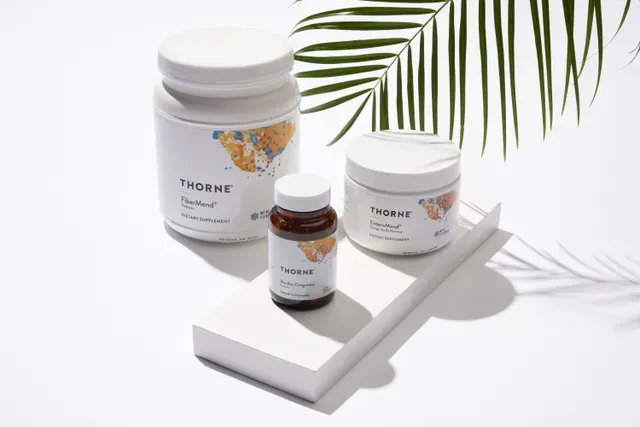
Thorne
Thorne sets the quality standards for supplements by being TGA, NSF, and cGMP Certified, and offers over 25 NSF Certified for Sport Products. Confirm Poovendran Regenerative Orthopedic Institute as your HCP Referral during account creation for your ongoing exclusive discount and free shipping.
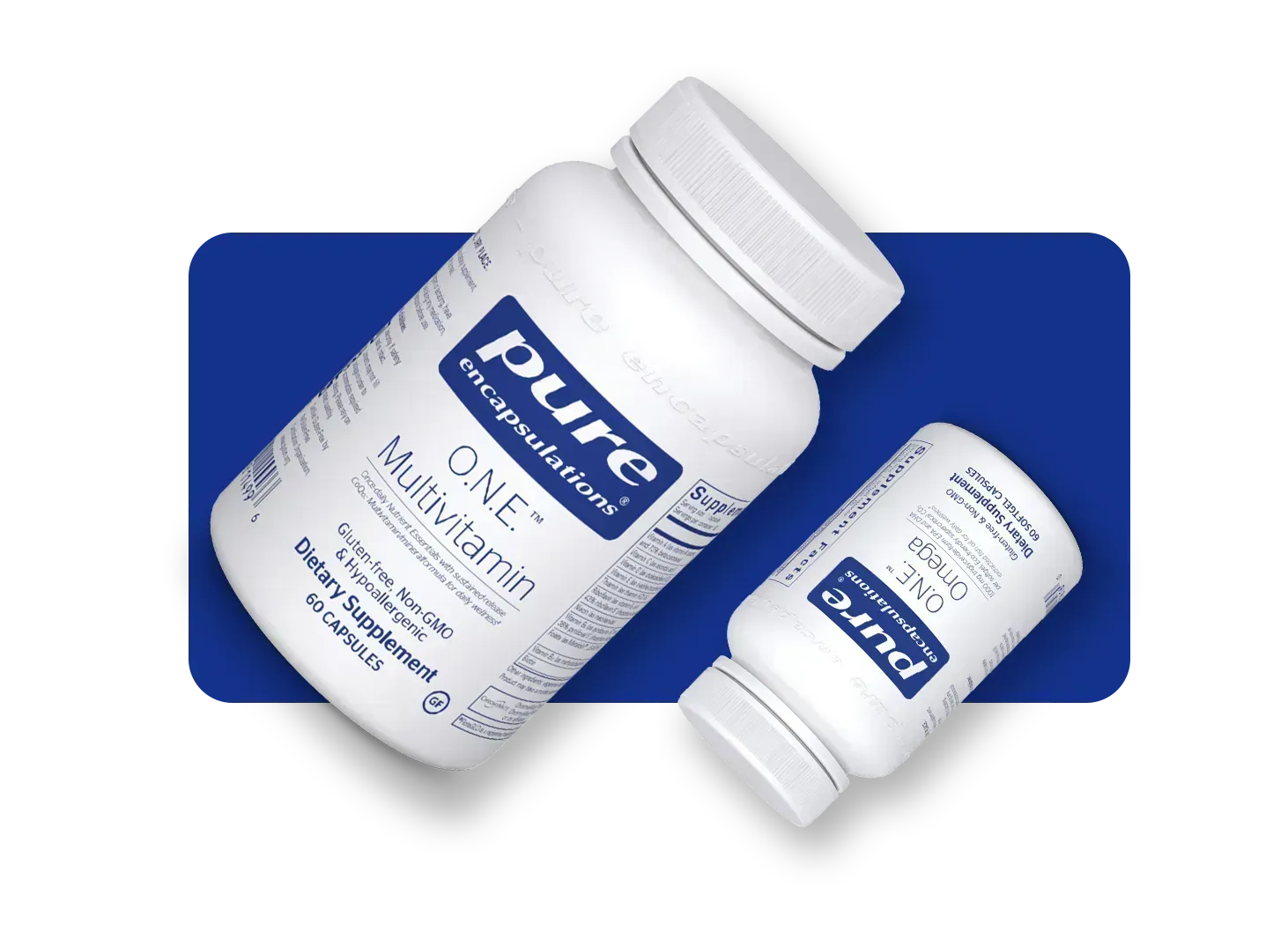
Pure Encapsulations
Pure Encapsulations® is dedicated to providing nutritional supplements that are designed with integrity using premium ingredients backed by verifiable science, and held to the highest industry standards. Use Code 471998 to purchase your first order!
![]()
Our Podcast
Davie
10650 W State Road 84, Ste 111
Davie, FL 33324
Hours Of Operation:
Monday:
9:00 AM – 5:00 PM
Tuesday:
9:00 AM – 5:00 PM
Wednesday:
9:00 AM – 5:00 PM
Thursday:
9:00 AM – 5:00 PM
Friday:
9:00 AM – 5:00 PM
Saturday:
Closed
Sunday:
Closed
Davie
10650 W State Road 84, Ste 111
Davie, FL 33324
Hours Of Operation:
Monday:
9:00 AM – 5:00 PM
Tuesday:
9:00 AM – 5:00 PM
Wednesday:
9:00 AM – 5:00 PM
Thursday:
9:00 AM – 5:00 PM
Friday:
9:00 AM – 5:00 PM
Saturday:
Closed
Sunday:
Closed
Monday:
9:00 AM – 5:00 PM
Tuesday:
9:00 AM – 5:00 PM
Wednesday:
9:00 AM – 5:00 PM
Thursday:
9:00 AM – 5:00 PM
Friday:
9:00 AM – 5:00 PM
Saturday:
Closed
Sunday:
Closed
Frequently Asked Questions
Will my insurance company cover prp or stem cell injections?
Currently, most major insurance companies do not cover orthobiologics, like PRP or stem cell injections. However, we do offer clear pricing and financing options through CareCredit.
How much do regenerative procedures cost?
The cost of regenerative medicine varies based on the specific treatment and the individual condition being addressed. Because each patient’s needs are unique, our treatment plans are fully customized to ensure the best possible outcomes. As a general guideline, platelet-rich plasma (PRP) treatments typically start at $3,000, while stem cell therapies may begin around $8,000.
Why is the price so high? I've noticed it's available for less elsewhere.
The short answer to that is that you get what you pay for. Our orthobiologic treatments are customized for each individual patient. And with our PRO-formance and A2M PRP procedures, we include ultrasound-guided injections targeting multiple structures within and around the joint, ensuring patients receive the most comprehensive care. The platelet concentration is customized (typically 5x–15x baseline), with platelet count analysis to ensure precision. “Cheaper” prp’s at other places can’t say the same.
Do you offer any financing?
We do! We offer payment plans through CareCredit. Once CareCredit has approved your application and payment has been received, we can get your procedure scheduled.
How much pain will I be in after my procedure?
Some pain is completely normal, and most patients report moderate pain and discomfort at the injection site for 48-72 hours which is typically managed with Tylenol and heating packs. After that, you’ll notice that the pain begins to subside. If the doctor has prescribed any medications, those will help. However, it’s important to note that anti-inflammatory medications should not be used before or after your procedure. In addition, Dr. Poovendran may also recommend physical therapy.
Why did the doctor recommend physical therapy after my procedure?
Physical therapy after a PRP or stem cell procedure supports and enhances the body’s natural healing process by restoring mobility, reducing pain, and improving strength. It helps prevent stiffness and re-injury through guided, progressive exercises tailored to your condition. By improving blood flow and reinforcing proper movement patterns, PT maximizes the long-term success of the regenerative treatment. Together, these therapies promote faster, safer recovery and better overall function.
Am I too old for cell therapies?
Age is NOT a blanket disqualification for prp or stem cell. Factors like overall health and the specific type of therapy are considered more important than age alone. At PRO Institute, we have successfully treated a range of ages, even those well into their 80’s.
Are cell therapies safe?
In fact, the most consistent finding in all cell therapy research is that the procedures are safe with minimal risk.
How do we measure the quality of the cell therapies you're receiving?
At PRO Institute, we utilize a hematology analyzer to measure platelet counts and compare the concentration of platelets before and after centrifugation. This ensures the PRP preparation meets therapeutic dosing thresholds, typically 5 – 15x baseline platelet concentration.
How do I know if I'm a good candidate for regenerative medicine?
The best way to know if you’re a candidate for cell therapies is to come in for a consultation. We will review any prior imaging studies, as well as conduct a diagnostic ultrasound of the area. The doctor will also review your health history, and determine the best course of treatment.
Will my insurance company cover prp or stem cell injections?
Currently, most major insurance companies do not cover orthobiologics, like prp or stem cell injections. However, we do offer clear pricing and financing options through CareCredit.
How much do regenerative procedures cost?
The cost of regenerative medicine varies based on the specific treatment and the individual condition being addressed. Because each patient’s needs are unique, our treatment plans are fully customized to ensure the best possible outcomes. As a general guideline, platelet-rich plasma (PRP) treatments typically start at $3,000, while stem cell therapies may begin around $8,000.
Why is the price so high? I've noticed it's available for less elsewhere.
The short answer to that is that you get what you pay for. Our orthobiologic treatments are customized for each individual patient. And with our PRO-formance and A2M PRP procedures, we include ultrasound-guided injections targeting multiple structures within and around the joint, ensuring patients receive the most comprehensive care. The platelet concentration is customized (typically 5x–15x baseline), with platelet count analysis to ensure precision. “Cheaper” prp’s at other places can’t say the same.
Do you offer any financing?
We do! We offer payment plans through CareCredit. Once CareCredit has approved your application and payment has been received, we can get your procedure scheduled.
How much pain will I be in after my procedure?
Some pain is completely normal, and most patients report moderate pain and discomfort at the injection site for 48-72 hours which is typically managed with Tylenol and heating packs. After that, you’ll notice that the pain begins to subside. If the doctor has prescribed any medications, those will help. However, it’s important
to note that anti-inflammatory medications should not be used before or after your procedure. In addition, Dr. Poovendran may also recommend physical therapy.
Why did the doctor recommend physical therapy after my procedure?
Physical therapy after a PRP or stem cell procedure supports and enhances the body’s natural healing process by restoring mobility, reducing pain, and improving strength. It helps prevent stiffness and re-injury through guided, progressive exercises tailored to your condition. By improving blood flow and reinforcing proper movement patterns, PT maximizes the long-term success of the regenerative treatment. Together, these therapies promote faster, safer recovery and better overall function.
Am I too old for cell therapies?
Age is NOT a blanket disqualification for prp or stem cell. Factors like overall health and the specific type of therapy are considered more important than age alone. At PRO Institute, we have successfully treated a range of ages, even those well into their 80’s.
Are cell therapies safe?
In fact, the most consistent finding in all cell therapy research is that the procedures are safe with minimal risk.
How do we measure the quality of the cell therapies you're receiving?
At PRO Institute, we utilize a hematology analyzer to measure platelet counts and compare the concentration of platelets before and after centrifugation. This ensures the PRP preparation meets therapeutic dosing thresholds, typically 5 – 15x baseline platelet concentration.
How do I know if I'm a good candidate for regenerative medicine?
The best way to know if you’re a candidate for cell therapies is to come in for a consultation. We will review any prior imaging studies, as well as conduct a diagnostic ultrasound of the area. The doctor will also review your health history, and determine the best course of treatment.

